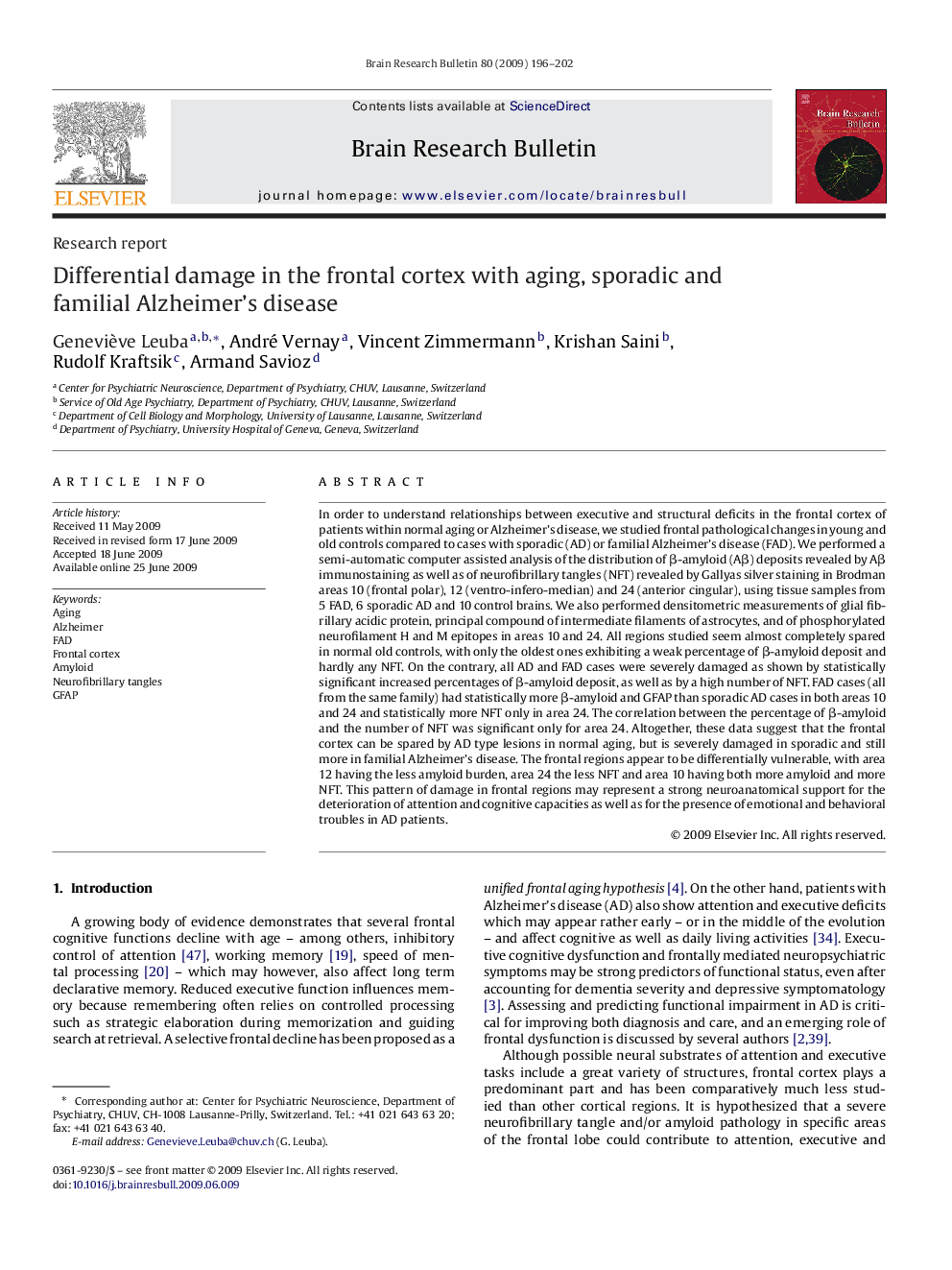| کد مقاله | کد نشریه | سال انتشار | مقاله انگلیسی | نسخه تمام متن |
|---|---|---|---|---|
| 4319462 | 1613286 | 2009 | 7 صفحه PDF | دانلود رایگان |

In order to understand relationships between executive and structural deficits in the frontal cortex of patients within normal aging or Alzheimer's disease, we studied frontal pathological changes in young and old controls compared to cases with sporadic (AD) or familial Alzheimer's disease (FAD). We performed a semi-automatic computer assisted analysis of the distribution of β-amyloid (Aβ) deposits revealed by Aβ immunostaining as well as of neurofibrillary tangles (NFT) revealed by Gallyas silver staining in Brodman areas 10 (frontal polar), 12 (ventro-infero-median) and 24 (anterior cingular), using tissue samples from 5 FAD, 6 sporadic AD and 10 control brains. We also performed densitometric measurements of glial fibrillary acidic protein, principal compound of intermediate filaments of astrocytes, and of phosphorylated neurofilament H and M epitopes in areas 10 and 24. All regions studied seem almost completely spared in normal old controls, with only the oldest ones exhibiting a weak percentage of β-amyloid deposit and hardly any NFT. On the contrary, all AD and FAD cases were severely damaged as shown by statistically significant increased percentages of β-amyloid deposit, as well as by a high number of NFT. FAD cases (all from the same family) had statistically more β-amyloid and GFAP than sporadic AD cases in both areas 10 and 24 and statistically more NFT only in area 24. The correlation between the percentage of β-amyloid and the number of NFT was significant only for area 24. Altogether, these data suggest that the frontal cortex can be spared by AD type lesions in normal aging, but is severely damaged in sporadic and still more in familial Alzheimer's disease. The frontal regions appear to be differentially vulnerable, with area 12 having the less amyloid burden, area 24 the less NFT and area 10 having both more amyloid and more NFT. This pattern of damage in frontal regions may represent a strong neuroanatomical support for the deterioration of attention and cognitive capacities as well as for the presence of emotional and behavioral troubles in AD patients.
Journal: Brain Research Bulletin - Volume 80, Issues 4–5, 28 October 2009, Pages 196–202